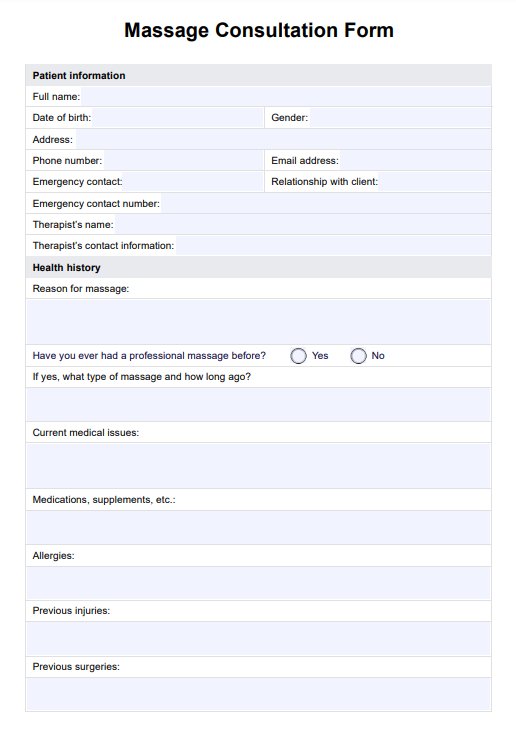Both massage therapists use the Massage Consultation Form to gather information about the patient before a massage session.

Massage Consultation Form
Streamline your massage practice with our Massage Consultation Form. Gather client information efficiently for personalized and safe sessions.
Use Template
Massage Consultation Form Template
Commonly asked questions
The form is typically used before the first massage session with a new client to collect relevant health history, preferences, and informed consent.
Using the form ensures that clients and therapists understand the client's needs, preferences, and potential health risks, leading to a safer and more personalized massage experience.
EHR and practice management software
Get started for free
*No credit card required
Free
$0/usd
Unlimited clients
Telehealth
1GB of storage
Client portal text
Automated billing and online payments











